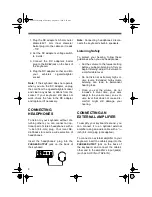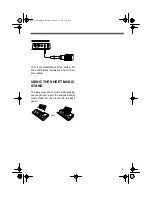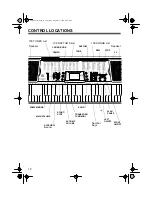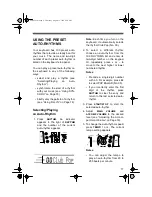
22
For example, to enter a minor 7
–
5
chord, press
m
(
8
)
7
(
9
)
–5
(
2
) as
shown below. Or, to enter 7sus4,
press
7
(
9
) and
sus4
(
1
).
4. Press the root key on the accompa-
niment keyboard to play the chord.
For example, to play an F# chord,
press the F# key as shown here.
As the chord plays, the display
shows:
• the chord you entered
• the keys to press to form the chord
(on the bottom “keyboard”)
• the fingers you need to use to play
the chord (on the center “hands”)
• the notes that make up the chord
(on the staff display)
5. Use
–
or
+
to scroll through the
chords associated with the root
chord you entered in Step 3. Or,
press a different root key to see the
chords based on that key.
Notes:
• If the chord is not recognized by
the keyboard, only a dash ap-
pears on the display.
• Since the keyboard automatically
changes some chords so you can
play them on the accompaniment
keyboard, the keyboard might dis-
play some chords in inverted
form.
6. Using the center “hands” as a guide,
play the displayed chord on the key-
board.
7. When you have finished, press
CHORD
BOOK
to turn off chord
book.
42-4038.fm Page 22 Thursday, August 12, 1999 8:50 AM






























